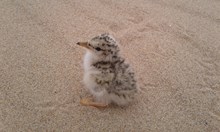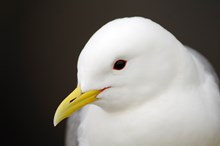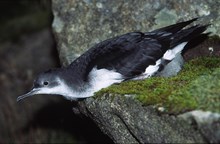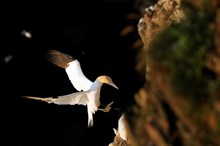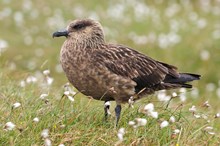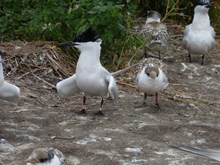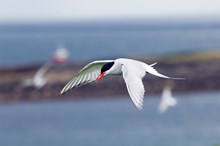21 December, 2022
Highs and lows at NatureScot’s nature reserves this year
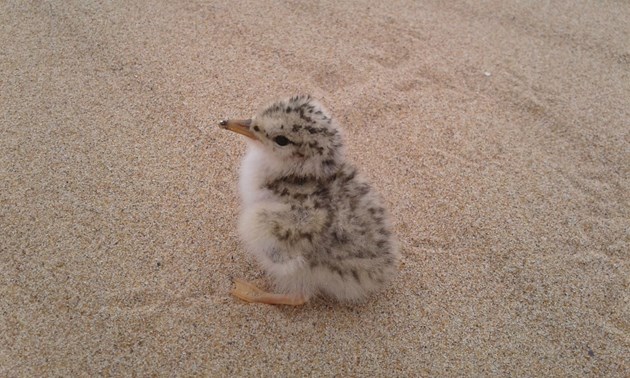
NatureScot’s coastal National Nature Reserves (NNRs) had a difficult year as avian flu swept through some seabird colonies, but there were glimmers of hope with other species faring well.
In Shetland, at Noss NNR, the breeding population of great skuas, or bonxies, fell by 78% as avian flu devastated the colony, while breeding numbers of gannets dropped by 16.7%. Both species also suffered badly at Hermaness NNR.
Against all odds, however, the bonxies that did not succumb to the virus at Noss managed to fledge chicks and breeding success for the species was better than in some other years in the reserve’s history, including 2017 when no chicks fledged at all.
Meanwhile kittiwakes had one of their best seasons in recent years, with breeding attempts up by 58% from last year. Many kittiwake chicks were seen to fledge their nests and breeding success was up from 0.5 to 0.9 chicks fledged per pair.
Bonxies are known for preying on kittiwakes, as well as stealing their food, and the reduction in bonxie numbers possibly contributed to the successful breeding season at Noss.
Another species that bonxies are known for stealing food from is the Arctic tern, which also had an exceptional breeding season, again possibly in response to the reduction in bonxie numbers.
Other species appeared to evade the virus at Noss, including shags, guillemots, razorbills, puffins and fulmars, with numbers and breeding success of these species either on par with last year, or slightly improved.
Further south at Forvie NNR, terns did well in 2022 despite the threat of avian flu.
The breeding terns at Forvie are of international importance and each year the reserve is carefully managed with closed areas and fencing to help protect the birds from disturbance and predation.
This year at least 17 little tern chicks successfully fledged – the highest number since 2014. The species is on the edge in the UK as a whole, as a result of factors such as poor weather and predation.
Sandwich terns at the reserve had a good season with 1,031 pairs breeding and at least 865 young fledged. The breeding pairs represent around 10% of the entire UK breeding population so the colony is of national importance.
Meanwhile 1,140 pairs of Arctic terns bred with at least 882 chicks fledged, while 107 pairs of common tern produced 83 fledged young.
An all-time record was also recorded for black-headed gulls at Forvie, with at least 1,029 fledged young, while the kittiwake colony had 705 fledged young - a great result for a cliff-nesting seabird that has declined widely in Scotland in recent years.
Unfortunately it wasn’t all good news, however, with eiders at the reserve having a poor year. With around 100 nests recorded, only 21 young successfully fledged, with avian flu thought to be a likely cause of mortality.
Over on the west coast on Rum NNR, home to one of the largest Manx shearwater breeding colonies in the world, there was relief that these seabirds escaped the ravages of avian flu that devastated many colonies in the summer.
Well over 100,000 pairs nest in the island’s mountains each year and concern was high after confirmation that a dead bird in the colony had tested positive for the virus. Thankfully monitoring by NatureScot showed that productivity this year was in the normal range, meaning that around 69% of nests produced fledged chicks.
Red-throated divers also continued to breed in good numbers on the NNR with a total of 10 chicks fledging in 2022.
With the threat of the virus still very much live heading into 2023, Scotland’s avian flu task force, led by NatureScot, is continuing to work flat out to gain a better understanding of the virus and take the necessary action on the ground to protect our wild birds.
Away from the coasts, large-scale habitat restoration has continued apace at many NatureScot’s reserves this year.
More than 100 hectares of peatland restoration is now underway on the mountainside at Ben Wyvis NNR, thanks to funding from Peatland ACTION. This will have wide benefits for storing carbon, but also for a variety of species that live on the slopes of Ben Wyvis, and the burns and rivers that flow off the hill.
Meanwhile at Beinn Eighe, the UK’s oldest NNR, a milestone has recently been reached in work to expand and improve the quality of the ancient pinewood fragments on the reserve.
The last of 20,000 trees have now been planted to complete the wildlife corridors between these ancient fragments of woodland. This will create a seed source for future woodland expansion which will now be focusing on natural regeneration rather than planting.
And at Creag Meagaidh NNR, landscape-scale restoration is also underway to benefit nature and people. Deer management has been crucial to the success of the returning native woodland expanding, and in a new venture, venison is now being sold locally on the NNR, with funds being used to directly support work on the reserve.
NatureScot Chief Executive Francesca Osowska said: “This year has been a challenging one for nature in Scotland, as we saw an unprecedented avian flu outbreak that took a devastating toll on our wild birds, with NatureScot leading the national response to the crisis.
“As we look back on 2022, it’s heartening to hear some more hopeful stories from our National Nature Reserves and reflect on the great work staff are doing on the ground for nature and people.
“With new global targets for nature just agreed this week at the United Nations Biodiversity Conference (COP15), we head into 2023 with stronger than ever resolve to lead the bold action needed to protect, restore and value nature, and tackle the twin crises of climate change and biodiversity loss.”
ENDS
Contact information
- Name
- NatureScot Media
- Telephone
- 0131 316 2655
- media@nature.scot
Notes to editors
Find out more about our National Nature Reserves across Scotland.
See our avian flu webpages for more information on the ongoing work of Scotland’s avian flu taskforce.
NatureScot is Scotland's nature agency. We work to enhance our natural environment in Scotland and inspire everyone to care more about it. Our priority is a nature-rich future for Scotland and an effective response to the climate emergency. For more information, visit our website at www.nature.scot or follow us on X at https://x.com/NatureScot
’S e NatureScot buidheann nàdair na h-Alba. Bidh sinn a’ neartachadh àrainneachd na h-Alba agus a’ brosnachadh dhaoine gu barrachd suim a chur ann an nàdar. Tha e mar phrìomhachas againn gum bi nàdar na h-Alba beairteach agus gun dèilig sinn gu h-èifeachdach le èiginn na gnàth-shìde. Tha an tuilleadh fiosrachaidh aig www.nature.scot no air X aig https://x.com/NatureScot

